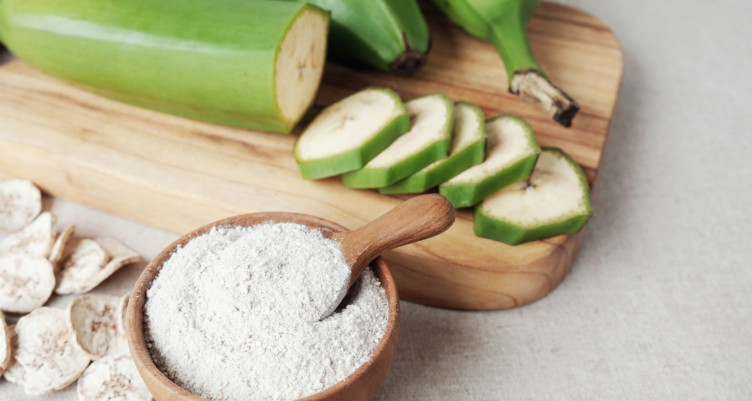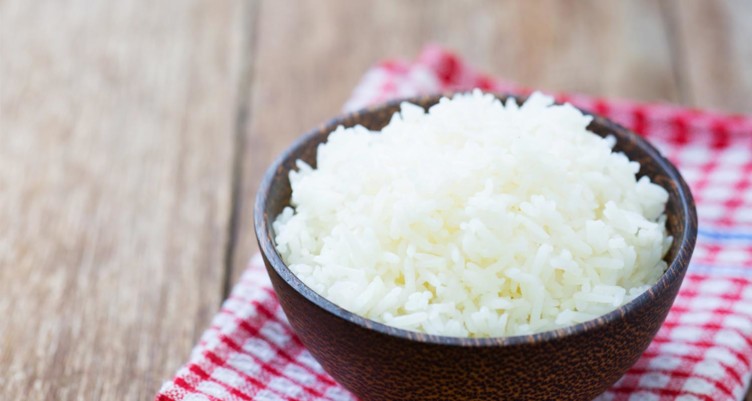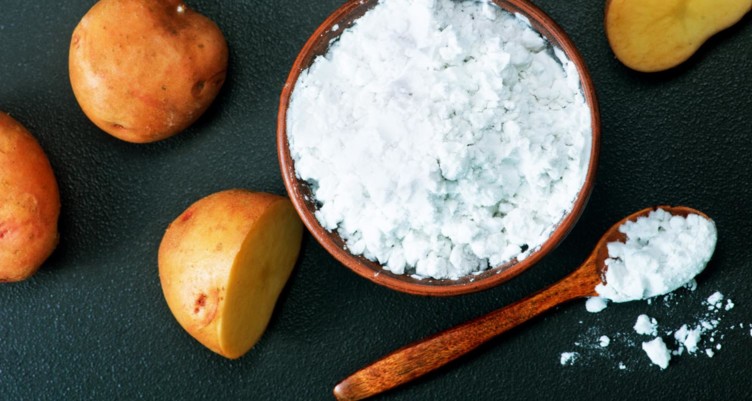Resistant Starch 101: A Complete Beginner’s Guide

- Resistant starch is a unique carbohydrate that resists digestion in the small intestine. It acts like dietary fiber and promotes a healthy gut microbiome.
- Including resistant starch in your diet can help improve insulin sensitivity, burn fat, curb hunger and support regular digestion.
- Aim for at least 6 grams of resistant starch per meal to reap the benefits and consider adding prebiotic and probiotic supplements for enhanced gut health.
Starch is a common carbohydrate in foods like potatoes, rice and bread, but not all starches are created equal. Regular starches are quickly broken down into glucose by the body, leading to a rapid rise in blood sugar levels.[1]?
Resistant starch behaves differently. Unlike regular starch, it resists digestion in the small intestine. Instead, it passes through to the large intestine, where it acts like dietary fiber. This distinction makes resistant starch a unique and beneficial type of carbohydrate that offers several advantages over regular starch.
Resistant starch has many health benefits, ranging from improved digestion to blood sugar support[2]? By feeding the beneficial bacteria in your gut, resistant starch promotes a healthy microbiome, which supports everything from immune function to mood[3] It can also help support better insulin sensitivity, making it beneficial for managing blood sugar levels[4] Additionally, resistant starch may help with your weight management goals by increasing feelings of fullness and reducing overall calorie intake.[5] Resistant starch offers many advantages that make it worth incorporating into your diet for long-term health.
Read on to find out how resistant starch works, how to consume it and all the ways to support a healthy gut microbiome.
What is Resistant Starch?

Resistant starch is a type of fiber your body can’t fully digest. Unlike regular starches that break down quickly into glucose, resistant starch passes through your digestive system like dietary fiber.[6]
Typically, enzymes in the small intestine break down starchy foods into glucose. Two main components make up starches: amylose and amylopectin. The body quickly digests foods higher in amylopectin. At the same time, it takes much longer to break down foods higher in amylose, like resistant starch.[7]
Resistant starch moves through the stomach and small intestine without being digested, eventually reaching the colon. Here, it becomes food for the beneficial bacteria in your gut. As the bacteria ferment the starch, they produce a substance called butyrate.[8]
Butyrate is a short-chain fatty acid that nourishes the cells lining your gut, helping to keep your digestive system healthy.[9] If you’re a fan of the Bulletproof Coffee recipe, you’ll be happy to know there’s butyrate in grass-fed butter, which means extra support for your digestive health.
The benefits of resistant starch

By resisting digestion in the small intestine, resistant starch acts more like fiber, providing benefits beyond just energy.[10] Its unique journey through the body sets the stage for various positive effects that can support your gut and general well-being.
Next, explore some of the key health benefits of resistant starch.
Reduces insulin resistance
Resistant starch may help with insulin resistance,[11] which happens when your body’s cells become less responsive to insulin, leading to higher blood sugar levels. Unlike regular starch, resistant starch doesn’t cause a spike in blood glucose because it bypasses digestion in the small intestine. Instead, it ferments in the colon, promoting a slow and steady release of glucose into the bloodstream. This helps prevent the rapid blood sugar spikes and crashes that contribute to insulin resistance over.[12]
Resistance starch can enhance insulin sensitivity by improving how your body processes glucose. Studies have found that people who consume resistant starch regularly tend to have better blood sugar control and lower insulin levels.[13] This is especially important for individuals at risk of developing metabolic disorders.[14] By including resistant starch in your diet, you’re giving your body the tools to support healthy blood sugar levels and insulin production, ultimately leading to better long-term health.[15]
Burns fat and curbs hunger
Can resistant starch help you lose weight? Yes, it can. Resistant starch helps burn fat by promoting fat oxidation and breaking down fat for energy.[16] Since it doesn’t spike blood sugar levels, it encourages your body to use stored fat as fuel instead of relying on quick sugar fixes. This shift in energy use can support fat loss over time, making resistant starch a helpful addition to a weight loss plan.
Resistant starch also curbs hunger by increasing feelings of fullness.[17] When it ferments in the colon, it produces short-chain fatty acids, which signal to your brain that you’re full. This can help reduce cravings and prevent overeating. By keeping you satisfied for extended periods, resistant starch can naturally help you eat less without feeling deprived, aiding in weight management and fat loss.
Keeps you regular
Resistant starch is highly effective at promoting regular digestion. Since it acts like fiber, it adds bulk to your stool and helps food pass through the digestive system more smoothly. By feeding the beneficial bacteria in your gut, resistant starch encourages better gut health by supporting bowel regularity.[18] This can prevent common digestive issues, making maintaining a balanced digestive system easier.
In addition to keeping things moving, resistant starch supports the production of short-chain fatty acids like butyrate, which play a vital role in maintaining a healthy colon. Butyrate not only nourishes the cells in the colon but also helps with inflammation, further supporting digestive health.[19] By including resistant starch in your diet, you’re giving your digestive system the support it needs to stay regular and function optimally.
Now that you know how resistant starch can benefit your health, let’s look at the available types. Understanding the various forms of resistant starch will help you choose the best sources to include in your diet and maximize these health benefits.
Types of Resistant Starch

There are four main types of resistant starch,[20] each with unique sources and health benefits. Here’s a breakdown of each type:
Type 1
This type occurs in whole grains, seeds and legumes, which remain physically inaccessible to digestion. While these foods promote gut health by supporting the growth of beneficial bacteria, gluten and grains can contain varying amounts of inflammatory proteins and antinutrients. This type may not work for you, even if you’re not gluten-sensitive.
Type 2
You can find Type 2 resistant starch in raw potatoes and green bananas. It stays resistant to digestion in its natural state, but cooking these foods can convert some of this starch into a more digestible form.
Type 3
Type 3 resistant starch forms when starchy foods like cooked and cooled rice or pasta undergo retrogradation. This type offers benefits for blood sugar control and enhances gut health.[21]
Type 4
You often find this artificial resistant starch in processed foods like bread and cake. On food labels, you might see terms like polydextrin or modified starch. Processing creates this type, which manufacturers add to enhance texture and provide health benefits, such as supporting blood sugar control and aiding in weight loss.[22]
While some foods provide beneficial resistant starch, others may not align with your dietary needs, especially if you have nightshade or gluten sensitivities. Choosing the right foods and preparation methods is essential to ensure you gain the benefits of resistant starch without adverse effects.
The Best Sources of Resistant Starch

To include more resistant starch in your meals, consider the following food sources and preparation tips:
Green Bananas
Enjoy them raw as a snack, or blend them into smoothies. Avoid letting them ripen too much, as ripe bananas contain less resistant starch.
Cooked and Cooled Potatoes
Prepare potatoes by boiling or steaming them, then cool them in the refrigerator before eating. This retrogradation process increases their resistant starch content.
Raw Potato Starch
You can find raw potato starch at health food stores or online. Mix it into smoothies, yogurt or oatmeal for a nutrient boost without cooking. This starch retains its resistant properties when consumed raw.
Cooked and Cooled White Rice
Cooked white rice contains resistant starch, especially when cooled. To maximize its resistant starch content, cook the rice, let it cool completely in the refrigerator, and use it in salads or cold dishes. Brown rice also contains some resistant starch and offers additional fiber.
How to Introduce Resistant Starch into Your Diet

Great news: even if you follow a keto diet, you can still incorporate resistant starch into your meals. Certain resistant starch foods, like green bananas and raw potato starch, can work within a low-carb framework. However, it’s vital to be mindful of your overall carbohydrate intake and consult a nutritionist if needed.
To start adding resistant starch to your meals, try these tips:
- Begin with small amounts of resistant starch sources, such as adding a spoonful of raw potato starch to your smoothies or oatmeal.
- Enjoy cooked and cooled rice in salads.
- Mix green bananas into your morning smoothie for a nutritious boost.
- Add green banana flour to desserts like No-Bake Protein Brownie Bites.
Be cautious; introducing too much resistant starch too quickly can lead to digestive issues like gas, bloating or discomfort. Listen to your body and increase your intake gradually.
If you’re looking for an alternative or additional option, consider a prebiotic supplement, which can support gut health without the potential side effects of adding resistant starch too quickly. Always consult a healthcare provider before starting any new supplements, especially if you have existing health concerns.
How Much Resistant Starch Should You Eat?
When incorporating resistant starch into your diet, moderation is key. Americans’ estimated daily intake of resistant starch is approximately 5 grams per day, much lower than the recommended minimum of 6 grams per meal for optimal health benefits.[23] For each meal, consider including 5 to 10 grams of resistant starch, depending on your daily goal.
Start slowly, especially if you’re new to resistant starch. Gradually increasing your intake can help your gut adjust and reduce the risk of any digestive discomfort. Remember that individual tolerance may vary, so listen to your body and adjust as needed. Incorporating various resistant starch sources can help you meet your daily goals while adding diversity to your meals.
Prebiotic and Probiotic Support

In addition to incorporating resistant starch into your diet, consider adding prebiotic and probiotic supplements for enhanced gut health. Prebiotic supplements contain non-digestible fibers that serve as food for beneficial gut bacteria, promoting their growth and activity.[24] These fibers can help improve digestion, boost immunity, and support overall gut health. Try Bulletproof InnerFuel Prebiotic, which acts like a resistant starch to support healthy digestion and a thriving gut microbiome.
On the other hand, probiotic supplements contain live beneficial bacteria that can help restore balance to your gut microbiome. They can aid digestion, enhance nutrient absorption and even support mental health.[25] Look for probiotics with a variety of strains, as different strains offer different benefits. When choosing supplements, ensure they are high-quality and backed by research. If you want prebiotics and probiotics all in one serving, plus collagen protein, try Bulletproof Gut Health Collagen Protein. It’s unflavored, so it’s an easy add-in for anything from coffee to smoothies.
Want to learn more about how to take care of your gut? Find out how to improve gut health and support your microbiome. For more details about gut-friendly foods, like insoluble and soluble fiber, check out our guide to why fiber matters (and how to get more of it).
Sign up for early access to sales, product launches, the latest Bulletproof news and more!
This article has been updated with new content.



